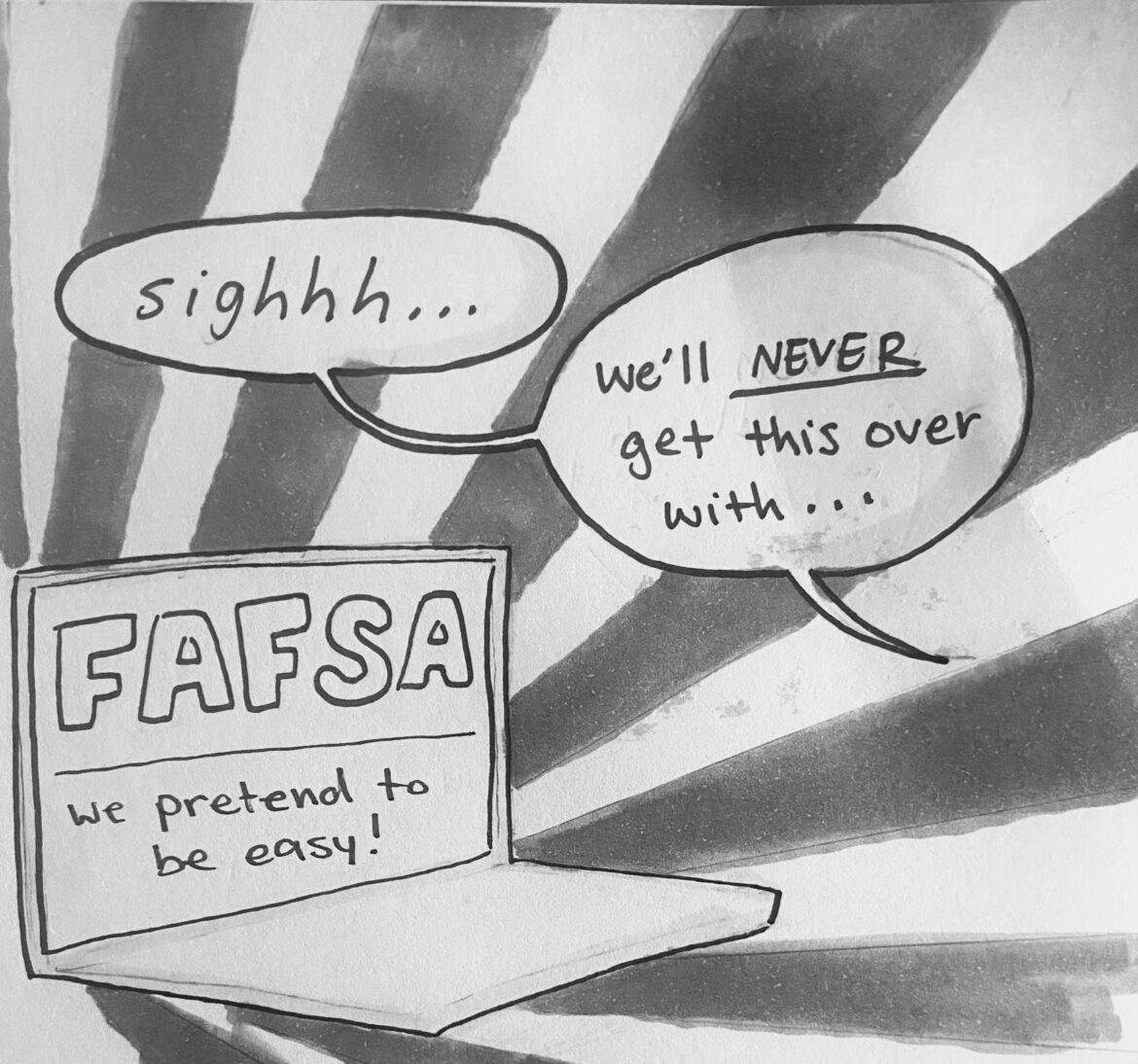By now, the complications with the new FAFSA form have circulated about, both in national news as well as in our own newspaper. If you have not heard about it yet, you will realize it when you go to fill out the form. The federal deadline for the FAFSA is June 30, but already there have been setbacks about it.
Montclair State University’s website has a directory for financial aid, which is considered anything that does not come from the student’s pocket. In most cases, the school makes an effort to bring students’ attention to what aid they can receive, both need-based as well as merit-based. There’s a variety of aid, ranging from work-study programs to scholarships, some which do not require FAFSA.
Different types of aid follow varying regulations the school and government has set. But it is Montclair State’s diverse support that enables students to stay enrolled, an achievement that has us ranked the third least expensive New Jersey college for in-state tuition, according to northjersey.com.
Credits determine a student’s academic standing, housing situation and eligibility for aid. The same credits also determine if a student will return to the campus next semester or not.
The revamped FAFSA form garnered widespread criticism about the confusing syntax and unclear questions, causing errors in the students’ true financial situation and hence, what kind of aid they will be rewarded.
On the FAFSA website, the U.S. Department of Education says there is also a process “…that allows students affected by this issue who need to meet state and institutional aid or scholarship deadlines to submit an incomplete FAFSA form before the issue is fully resolved.”
Such a statement should quell a student’s anxieties. But if the form’s new appearance provokes further confusion, it overshadows details like this, which could be in favor of the student’s current situation.
As outlined in a Montclarion News article, returning students need not worry right now about the federal aid form, as it does not get processed until after the spring semester.
Students have more time to figure out the FAFSA form. But the matter is such an alteration should not induce more stress.
This is not just a plea to our school but to the federal government. While there was an attempt to simplify the process, the question now is how colleges will troubleshoot these errors to disperse the appropriate aid.
Having an educated workforce is our future. But for that to happen, students need to be secure in the financial aspects of their schooling. Concerns about affordability impedes students from planning classes accordingly, leading to setbacks in scheduling and graduation, not to mention potential student loans afterwards.
When it comes to federal aid, colleges cannot disperse it if not given the data in a timely manner. Until the data is corrected for, the department suggests that “…colleges can manually recalculate the faulty data to create tentative aid packages”, as cited in a Washington Post article. Granted, making a rough outline is something the university financial aid office can do in the meantime until accurate information is provided.
In terms of what the students should do? For starters, the university can communicate what is within our control. Critical notifications can be sent out for information such as: what forms are due for which aid, verifying if class enrollment is possible, and most of all, clarifying common FAFSA questions. Just as with other resources, hosting workshops and sending announcements in the weekly emails about the next steps is a way to give us some sort of handle on things.
Because the last thing we need is to be ripping more pages out of our checkbooks than our notebooks.



